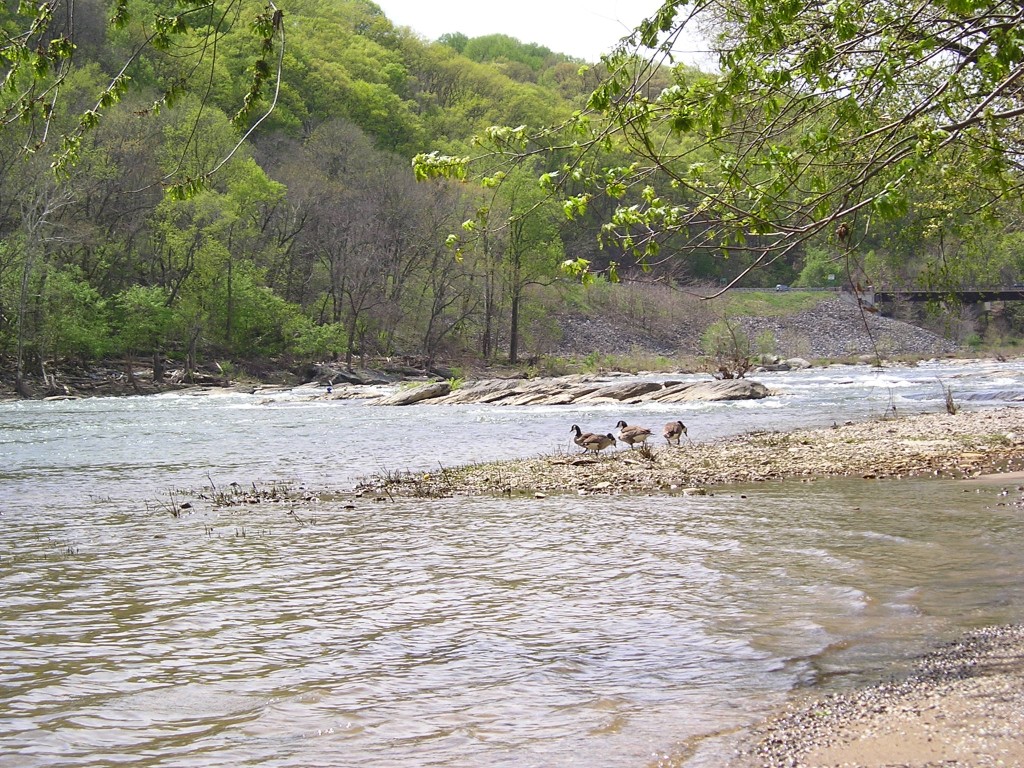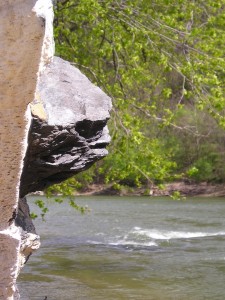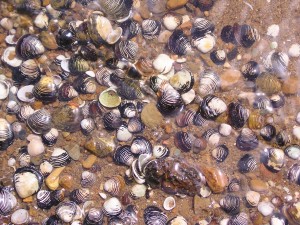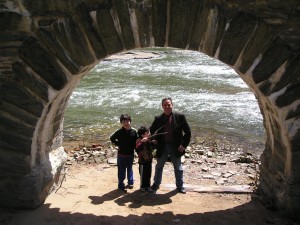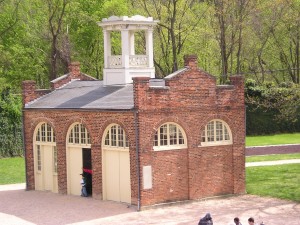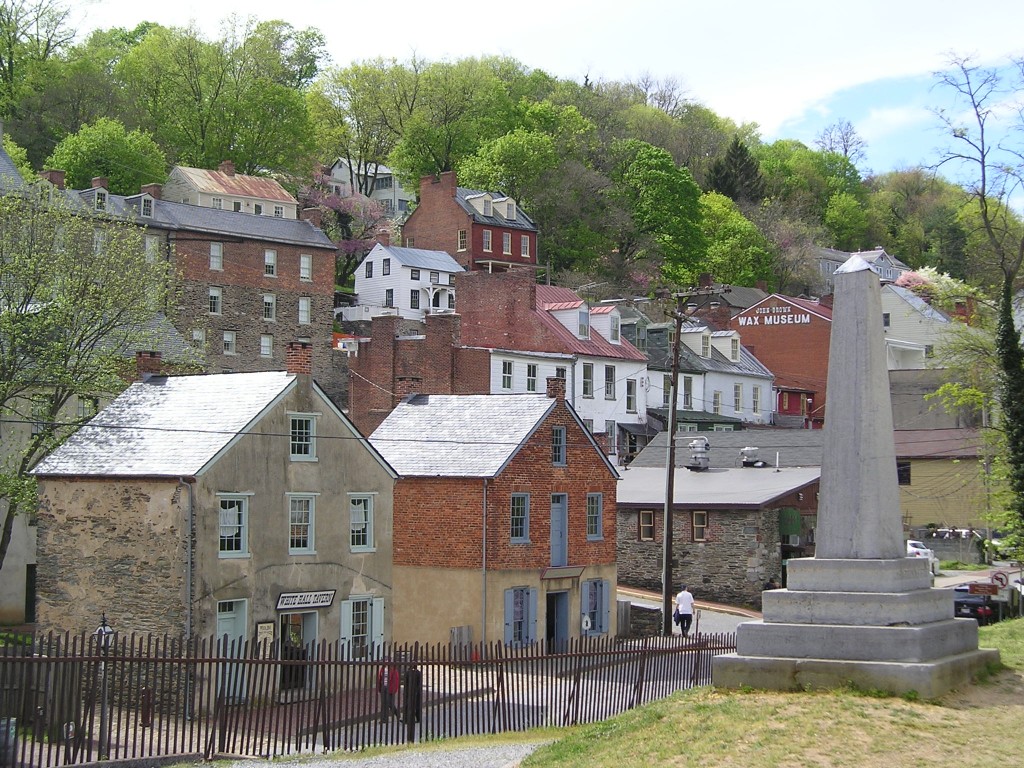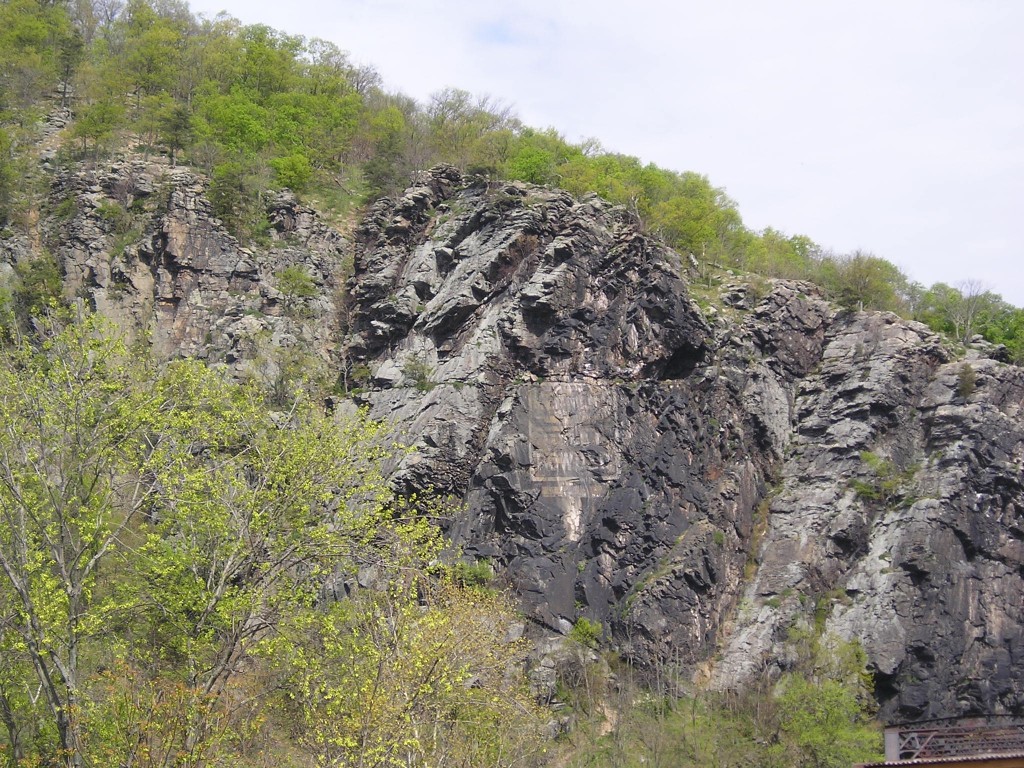Several weeks ago my family and I visited a place that should be on the destination list of any day-tripper in the Mid-Atlantic region with an interest in American history and/or spectacular scenery – Harpers Ferry, West Virginia. This nearly 250-year-old town, whose compact 0.6 square mile is split between a National Historical Park and a Historic District, is located at the confluence of the Potomac and Shenandoah rivers, where three states meet: Virginia, West Virginia, and Maryland. It was the site of one of two original United States Armories, of John Brown’s antislavery raid in 1859, and of a major Civil War battle which resulted in the surrender of a larger number United States troops than at any time in history, prior to the surrender on the Bataan Peninsula in 1942. The town changed hands eight times during the Civil War, which resulted in the destruction of much of its considerable industrial infrastructure. That infrastructure was subsequently almost completely obliterated by the great flood of 1870, only one of numerous ruinous floods which swept through the area during the nineteenth and early twentieth centuries.
Parking in the Lower Town area of Harpers Ferry, site of the John Brown Monument, the remains of the Federal Armory and Arsenal, the Amtrak station, and restaurants and attractions, is very limited, so most visitors will want to pay the $10 admission fee to the Harpers Ferry National Historical Park, which boasts ample parking located a mile and a half away, beyond Virginius Island and up Bolivar Heights. Every fifteen minutes, a comfortable bus ferries visitors to a stop just outside Lower Town, near the northern tip of Virginius Island, which sits in the Shenandoah River.
No one lives on Virginius Island now. The last inhabitants fled after the record flood of 1936. What remain on Virginius Island are the ruins of numerous nineteenth century mills and factories, all of which took advantage of the power provided by the Shenandoah River. The National Parks Service is currently engaged in archeological excavations (which, ironically, suffered severe setbacks during two floods in December, 1996) to preserve the ruins and to interpret the economic, industrial, and residential life of the thirteen-acre island.
This is gorgeous spot in which to spend an hour or two of quiet contemplation (not that I was able to have too much of that, needing to keep an eye on three boys). On the far side of the Shenandoah River from the island are the Loudoun Heights of Virginia, beautiful tree-lined hills teeming with birds. Several sets of mild rapids dot the river adjacent to the island, and one doesn’t have to stand on its shore for very long before seeing kayakers or rafters. The sandy shore of the river is sprinkled with colorful clam shells, and various types of ducks and geese frequently land on the river’s shoals and small islands. The sounds of traffic from the road on the Virginia side are muted and add to, rather than detract from, one’s contemplative mood.
Virginius Island, the former industrial district of Harpers Ferry, is a short walk from Lower Town. Part of the Harpers Ferry National Historical Park, Lower Town features a book store, a museum of nineteenth century industry, and reproductions of Civil War era clothing and sundries shops. It is also the site of the John Brown Memorial and the fire engine house, originally next door to the Federal Armory, which Brown and his followers took refuge in while under siege by a contingent of U.S. Marines temporarily commanded by future Confederal General Robert E. Lee (then a lieutenant colonel and, although on leave, the senior officer closest to Harpers Ferry when Brown attacked the Armory).
During the late nineteenth century, after war and floods had displaced or destroyed most of the town’s heavy industry, Harpers Ferry became a fashionable summer resort for several decades, hosting many prominent visitors from Washington, DC and Baltimore, including President Woodrow Wilson. The Baltimore and Ohio Railroad operated an amusement park, called Island Park, on a piece of land that jutted out into the Potomac River. However, the Great Depression and the great flood of March 18-19, 1936, when the rivers crested at 36.5 feet at Harpers Ferry, the all-time record, ended the resort trade in the town.
The site of the old U.S. Armory and Arsenal, destroyed during the Civil War, is located between the Harpers Ferry Amtrak Station and a pair of railroad bridges, including the historic B & O Railroad Potomac River Crossing. On the far side of the Potomac from the old armory lies Maryland Heights. The Heights are pierced by a railroad tunnel, and a cliff face of naked shale still holds an early twentieth century advertisement for borated toilet powder (whatever the heck that was!).
More photos to come!

